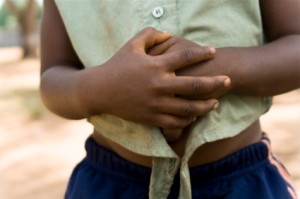Hunger also changes the world – when eating can’t be a habit, then neither can seeing. ~Maxine Hong Kingston
Let’s start with the facts. 1 in 6 people do not get enough food to be healthy. When you are not healthy you cannot play with your kids, concentrate in school, work and make a living for your family. Umm it’s kind of a big deal.. A really big deal. I say that with just a little snark, but hunger and malnutrition are the number one risks to health worldwide. That means there are more than 1 billion hungry people in the world. The majority of those that are hungry are not surprising women and children. If you dig a little deeper you will find out that 60% of chronically hungry people are women. We know this in part because women are feeding their children before they are feeding themselves.
Hunger and malnutrition are in fact the number one risk to the health worldwide — greater than AIDS, malaria and tuberculosis combined. Let me say that again as clearly as I possibly can- More people die of hunger every year than from AIDS, malaria and tuberculosis combined. One child dies every 6 seconds from hunger related causes.
It’s a BIG deal.
So let’s look deeper
Who are the hungry?
- Asia and the Pacific region is home to over half the world’s population and nearly two thirds of the world’s hungry people;
65 percent of the world’s hungry live in only seven countries: India, China, the Democratic Republic of Congo, Bangladesh, Indonesia, Pakistan and Ethiopia. - Around 50 per cent of pregnant women in developing countries are iron deficient. Lack of iron means 315,000 women die annually from hemorrhage at childbirth. As a result, women, and in particular expectant and nursing mothers, often need special or increased intake of food.
- Child hunger is inherited: up to 17 million children are born underweight annually, the result of inadequate nutrition before and during pregnancy.
- 75 percent of the hungry people in developing countries, half are farming families, surviving off marginal lands prone to natural disasters like drought or flood. One in five belongs to landless families dependent on farming and about 10 percent live in communities whose livelihoods depend on herding, fishing or forest resource
Umm yeah that’s right….the majority of people who are hungry in developing countries are farmers. I have been trying to wrap my head around that fact for a week.
As well as the obvious sort of hunger resulting from an empty stomach, there is also the hidden hunger of micro nutrient deficiencies which make people susceptible to infectious diseases, impair physical and mental development, reduce their labor productivity and increase the risk of premature death. Economists estimate that every child whose physical and mental development is stunted by hunger and malnutrition stands to lose 5-10 percent in lifetime earnings.
Medicins Sans Frontieres recently travelled to malnutrition “hotspots” around the world to produce a series of multimedia documentaries that shed light on the underlying causes of the malnutrition crisis and innovative approaches to combat it. Check out the website, it will make you think, make you cry, make you angry and hopefully make you act. https://www.starvedforattention.org/

